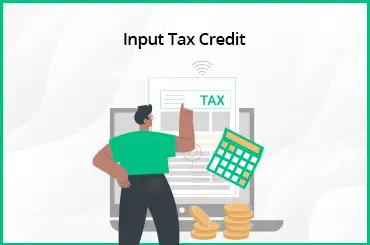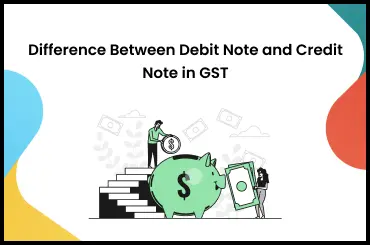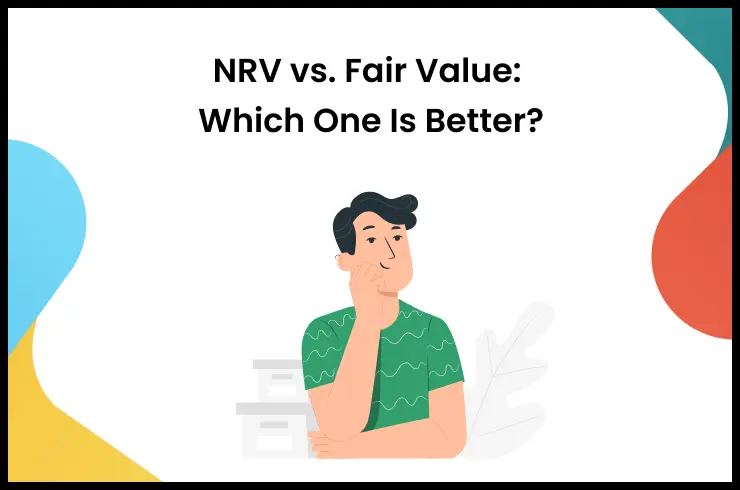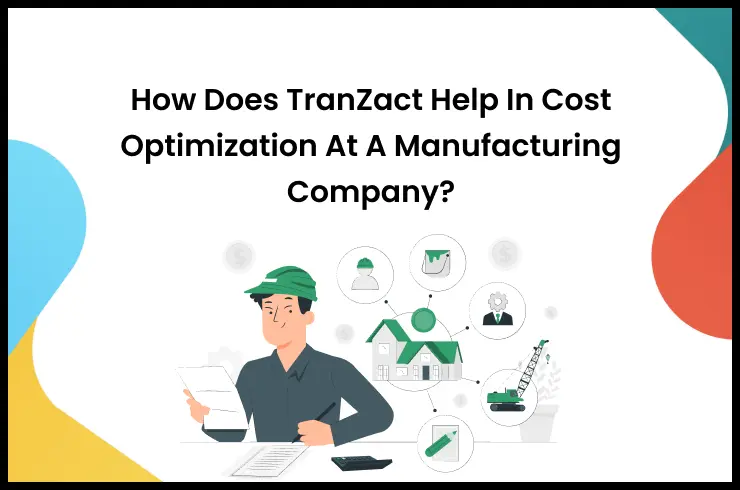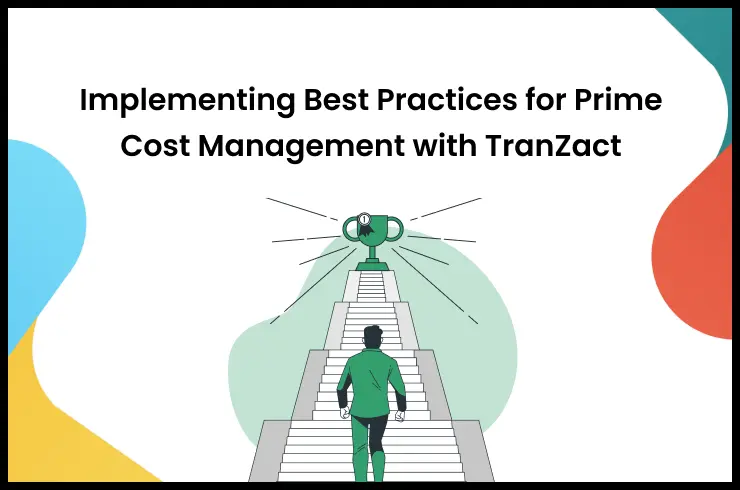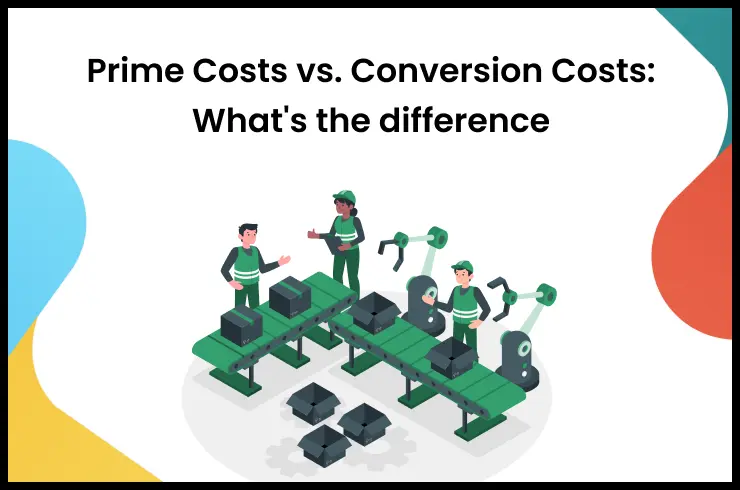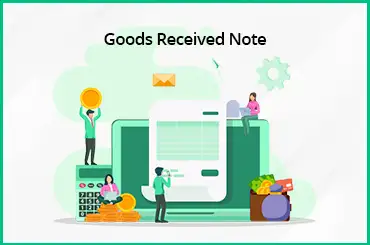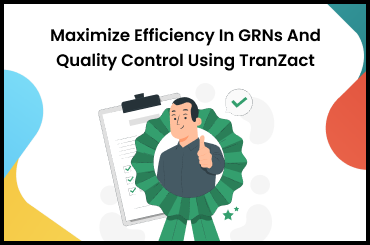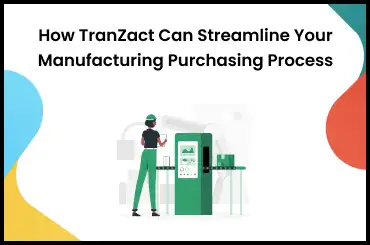A Purchase Order (PO) is an essential business document used for budgeting, expense tracking, and supplier management. As a buyer, you will create purchase orders to prevent miscommunications with suppliers and cut down on unexpected costs.
This article will focus on the purchase order creation process, purchase order format and template, PO systems, types of purchase orders, and more. Continue to read and know more.
What Is a Purchase Order?

A purchase order is a commercial source document that a business' purchasing department issues while placing an order with the suppliers or vendors. It includes all details regarding the items to be purchased, like the types of goods, price, and quantity.
Generally, a PO is an agreement drafted by a buyer while purchasing items from a seller. POs are helpful for both sellers and buyers since they specify the goods needed and the delivery time. This helps to streamline vendor management and financial record keeping and increases business efficiency.
Read Also - Decoupling Inventory 101: Ultimate Guide
How Does a Purchase Order Work?

Purchase orders can act as legally enforceable contracts. To understand the working process of a purchase order, we will need to know how to create a purchase order.
A business can also leverage a purchase order management system to manage the purchase order creation process seamlessly.
Step 1 - Buyer orders items from the seller
Before placing an order, the buyer must identify the product need that the seller's company can fulfill. In this step, the buyer has to identify the necessary products, the quantity needed, and the time margin of fulfilling the need. Purchase order automation software helps you to track these metrics in case of large volumes of POs.
For example, if you need to order packaging boxes for your product shipping, you must calculate the number of packages you need, and when you will need them. If you’re expecting increased demand this year due to the upcoming holidays, you should multiply last year's box order by your business' estimated growth for this season, to determine the right order amount.
Step 2 - Buyer drafts PO and sends it to the seller for approval
After determining the above information, the buyer has to raise a purchase order and ask the seller to approve it. While sending the PO, remember to mention when you need the approval so that the process runs on time. A purchase order tracking system can help to track the status of all the PO approvals and save time. The approval response, whether yes or no, should come in early enough, to leave the buyer with ample time to source from different sellers if necessary, without delaying production schedules. After creating POs, the next step is the review of the PO.
Step 3 - Seller reviews the PO, and confirms or rejects it to fulfill the request
After receiving the PO, the seller will decide when to review the request and check the product availability or inventory, to confirm if the order can be fulfilled within the timeline. After a careful review of inventory and shipping capacity, the seller will confirm if he can proceed with the request or if he might have to reject it for some reasons, like inadequate inventory.
Step 4 - Your PO is approved
The seller will approve the PO if he can fulfill it as instructed, and this approval will legally bind both parties.
In the example of packaging boxes as mentioned earlier, if the box company approves your request, it will send an approved PO to you for your confirmation.
Step 5 - Product fulfillment
After the purchase order approval, the seller will deliver the product within the agreed time frame. At this stage, the seller can also create, and send an invoice to the buyer to indicate the cost of the PO. This invoice will display the provided goods details, owed amount, and relevant quantity along with the payment terms.
Step 6 - The invoice is paid
At this stage, the buyer will check the quality of goods received and record the same with an Inward and Goods Received Note document. The buyer then has to pay the invoice amount as per the seller's payment conditions.
The following section will help us understand the importance of purchase order collaboration by using the right PO format.
Read Also - ABC Analysis in Inventory Management: Benefits, and Implementation Strategies
Purchase Order Format
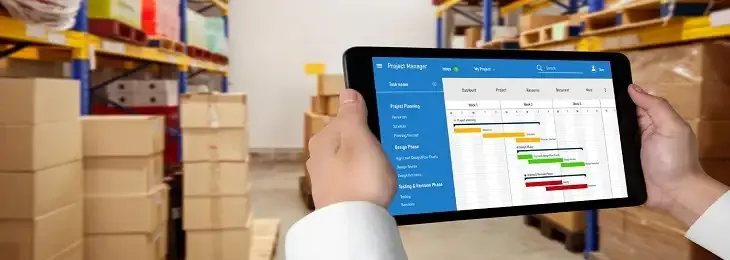
Having a written agreement regarding the prices, and quantity of items in your PO protects both you and your seller. For a PO, you need to include the following information.
1. Header
Provide your company details such as name, business address, PO number, and PO date.
2. Vendor information
Indicate the recipient of the PO. You will have to list the name of the seller, the specific contact name, and the address of the seller's company.
3. Shipping address
Specify the location area, where the order will be delivered, the shipping method, shipping terms, and the intended delivery date.
4. Order details
Provide a line item with the Stock Keeping Unit (SKU) number or product code, item description, name, price per unit, the number of requested units, and the delivery date of each product. You can maintain all these details in a purchase order tracking system to simplify processes.
5. Summarize
Complete the PO by providing the subtotal PO amount, applicable discount, shipping costs, taxes, and total PO invoice amount.
Read Also - Which Software Is Recommended For Inventory Management?
Purchase Order Template

With purchase orders, you get a legally binding record of exactly what you ordered, and at what price. In a PO form, the following fields will be included:
- Company name, address, city and state, zip code, date of order, and order number.
- Vendor contact name, client company name, address, and phone.
- Shipping details including user's name, department, client company name, address, and phone.
- Other shipping information including, shipping method, shipping terms, and delivery date.
- Product information including code, product name/ description, quantity, unit price, and delivery date.
- Payment information includes the total amount, discount, subtotal less discount, tax rate, total tax, shipping and handling charges, and the total amount.
Read Also - Understanding ERP Modules: Types, Features and & Functions
Types of Purchase Orders

Even though all POs have a similar base pattern, depending on how much information is included, generally five types of purchase orders are available:
1. Standard Purchase Orders
These POs are widely used and are the most common type. The buyer is certain about the purchase details and can identify the kind of items to buy, the delivery schedule, quantity, and payment terms. For example, a business running low on printer cartridges can place this as a standard order as they know the amount they need, and when they should have it. Standard POs can be generated for different functions depending on the requirements, such as subcontracting, services to be rendered, and consignment.
2. Planned Purchase Orders
A planned purchase order is made depending on the buyer's estimation of the company's future needs for the product by submitting an advance purchase order. In this case, even though the item details, price, and payment terms are known, the quantity is determined by an educated guess. For example, suppose a company with a low amount of printer cartridges asks for a planned PO. In that case, the person in charge will determine the number of printer cartridges needed with a flexible delivery schedule.
3. Blanket Purchase Orders
In this order, the buyer can place multiple orders simultaneously to ensure discounted pricing. For example, suppose the company mentioned above negotiates a better deal by agreeing upon bulk orders of printer cartridges with paper from them. In that case, it will be eligible to use a blanket purchase order to buy those products.
4. Contract Purchase Orders
In a contract purchase order, the seller, and buyer will sign a contract, which will outline the terms of buying before a PO is issued referencing the contract. These POs provide legal protection for both parties. For the printer supplies, if the company signs this contract displaying the items, pricing, quantity, and delivery schedule followed by a standard purchase order, the company will fall under the purchase order agreement.
5. Digital Purchase Orders
A purchase order management system can help in easy procurement, and benefit both sellers, and buyers. You can easily create a digital PO using an automated purchase order tool. A PO tool provides pre-existing templates with all required fields. All you need to do is, enter the required information and the purchase order automation software will create a PO for you in one click. An expert PO software may enable you to add new custom fields to the PO.
This software emphasizes the importance of purchase order collaboration between buyers and sellers by connecting them and streamlining the PO process.
Read Also - Which Software Is Recommended For Inventory Management?
Purchase Order System

A purchase order system is an organized software module that generates POs, manages them, and tracks digital POs in a secure and automated way.
A purchase order system is interconnected with other modules like the purchase transactions module, and inventory to update the respective departments and proceed with the order usage.
To create a purchase order, one must abide by the following guidelines -
1. Determine the right form of PO
Based on the types of purchase orders available, determine the best PO type for your business requirements.
2. Design a workflow
To automate the purchase order system within your business, outline the necessary steps your department needs to execute the PO from beginning to end.
You can make a purchase order workflow to showcase step-by-step interactions regarding storing or transferring data.
3. Dictate assigned roles and accessibility
Your team members should be aware of how to accurately assign job roles to ensure that the PO workflow is directed toward completion. The team will be required to set access permissions efficiently to external stakeholders, for them to contribute to the orders.
4. Start, and refine the purchase order
If you use, and follow the PO system, you'll need to collect feedback from your internal team, and stakeholders continuously. Determine the steps to be improved, and refine POs with the changes in the workflow. Eventually, you will have a productive purchase order management system and a seamless manufacturing chain.
Read Also - Difference Between Manufacturing and Production Explained
Purchase Order Example
A PO includes the customer's data, the shipping terms, the desired products, and the PO number. It can also have a note addressing the vendor. Some vendors will want to fill in business information; therefore, on the vendor section of the header, leave the section blank so they can fill it out.
Benefits of Purchase Orders

Purchase orders are important to avoid any future disputes between clients and vendors. There are various benefits of issuing a purchase order. The most important ones are -
- It ensures improvement in accurate inventory and purchase management, along with financial management.
- POs ensure better budgeting as the business needs to have the required funds before the PO is issued.
- It ensures faster delivery as POs require scheduled delivery as per the buyer's requirements.
- It also helps to avoid duplicate orders in case of large-scale orders. POs can help to track orders effectively and find out what goods have been ordered by whom.
Read Also - 25 Manufacturing Business Ideas in India
Purchase Order vs Invoice
Purchase orders are documents containing order details such as the product name, amount, the date it should be delivered, and more, generated by a buyer, and helps to order goods from the supplier. On the other hand, an invoice is generated by the supplier and displays the payable amount by the buyer for the product sent by the supplier. The difference between a purchase order and an invoice is that the former is an agreement of sale, while the latter confirms the sale and payment terms.
Work Order vs Purchase Order
The major difference between a work order, and a purchase order is that work orders typically deal with internal tasks and labor instructions. POs are used to raise an external purchase request for goods, raw materials, and equipment required for one’s production.
Once a PO is confirmed, the supplier will procure the goods mentioned in the PO for the buyer. And if the supplier does not have them ready, he will raise a work order for his production teams to get the required order ready for the buyer.
A work order is created based on the quantity and other requirements mentioned in the PO, but does not include the price details usually.
Read Also - Best Inventory Management Software for Small Business | TranZact
Supply Order vs Purchase Order
A purchase order is created by the buyer or customer specifying the details of the goods to be purchased. It creates a legally binding contract between the buyer and seller. Whereas a supply order is a document given to the buyer that can be used to obtain the item from the dealer. A supply order contains all details about the order of goods given to the vendor.
Sales Order vs Purchase Order
The major difference between a sales order and a purchase order is that the purchase order is raised by a buyer in need of goods and sent to the supplier.
A sales order, on the other hand, is raised by the supplier or seller once the PO is approved and initiated for production or delivery. It stands for approval or confirmation of the upcoming sale.
Nowadays, the purchase order process is not necessarily paper-based, and the buyer can send an electronic or digitized PO to the supplier. This can be done with the help of the PO module available in business automation software. It ensures a quick purchasing procedure while decreasing the chances of any error.
Read Also - Understanding Consignment Inventory: Definition, Pros, and Cons
Purchase Order vs Quotation
A purchase order is a formal request sent by a buyer to the supplier. It will contain the item details, the time limit within which the order needs to be sent, and the like.
However, a quotation is sent or received when a buyer or supplier first contacts different vendors to confirm one, for their upcoming requirements.
When a buyer is in need of certain goods, he sends a Request for Quotation (RFQ) to various sellers. The RFQ includes the list of desired products and other details. The supplier then receives this quotation and shares a one-time estimate provided to the customer with no bearing on inventory.
Purchase Order vs Purchase Requisition
A purchase requisition is used to request purchases by the employee. It is sent internally from one employee to the senior, or to the department manager for approval. However, a purchase order is the confirmed order requirement, approved by the departmental authority, and it is sent externally by the company employee to a vendor. The purchase department can create a purchase order only when the purchase requisition is approved. The main difference between a purchase order and a purchase requisition is that a purchase order is an external document.
Read Also - Make-to-Order (MTO): Definition and Example
Manage Purchase Orders Expertly With TranZact
A PO is the foundation of the procurement operations in your business. Automate your purchase order system with TranZact to streamline your PO processes and follow-ups.
With TranZact, you can manage all your purchase orders on a single dashboard with minimal manual dependency. It enables effective record keeping, and easy status updates, eliminates miscommunication and missed orders, ensuring timely delivery of supplies.
TranZact also equips you to add new custom fields to the purchase order document, based on your requirements. This allows you to customize the PO and add more important details to the existing template.
In addition to a PO, you can also create several other important documents with TranZact such as sales orders, goods received notes, quotations, challan, invoices, and more. It also helps you with other core modules like sales, inventory, production, and business intelligence, thereby empowering your manufacturing business to grow exponentially.
FAQs on Purchase Order
1. What is meant by purchase order?
A purchase order is a formal document issued by a buyer to a seller, outlining the specific details of goods or services to be purchased.
2. What are the 5 types of PO?
The five types of purchase orders (POs) include standard POs, blanket POs, contract POs, planned POs, and digital POs.
3. How to track purchase orders?
Purchase orders can be tracked through various means, including manual tracking, spreadsheets, or using purchase order management software. PO software provides real-time visibility into the status and progress of orders.
4. Why are purchase orders important?
Purchase orders are important as they help establish clear communication and agreement between buyers and sellers. They provide a documented record of transactions and aid in inventory management and financial control.
5. What information is included in a purchase order?
A purchase order typically includes details such as buyer and seller information, item descriptions, quantities, prices, delivery dates, payment terms, and any applicable terms and conditions.
6. When should a purchase order be used?
A purchase order (PO) should be used if the buyer wants to place an order for supplies. Once approved by the seller, a PO is used to update inventory, create work orders and proceed with production to fulfill sales orders.
7. Who should issue a purchase order?
The buyer who wants to ensure they receive exactly what they need as supplies, with legal support in case of discrepancies, should issue a purchase order.
8. What is the purpose of a PO?
POs (Purchase Orders) are essential documents for buyers as they formalize goods requirements, and pricing, and are legally binding documentation of ordered goods for manufacturing companies.







